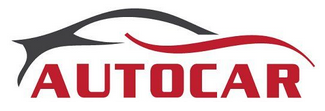In automotive and industrial fields, the right fittings selections are essential to ensure reliability and safety. Inverted flare fittings in combination with the copper-nickel fuel lines and brake lines have certain benefits over the other variants of the fittings. This blog will explore the pros and cons of inverted flare fittings and more particularly the comparison between the 3/16 brake lines and fuel line tubing.
Benefits of the Inverted Flare Fittings
Leak-Proof Seal: As for the inverted flare fittings, the compression mechanism employed in the process ensures a very strong seal that cannot be breached by pressure.
Ease of Installation: These fittings are quite simple to fit and do not require additional or complex equipment for their installation and this makes them to be widely used by both the professional mechanic and the amateur DIY mechanic.
Compatibility with Various Materials: Inverted flare fittings can be applied to various types of tubing including copper-nickel fuel lines and copper-nickel brake lines as well since they do not corrode quickly.
Reusability: In contrast to other types of fitting, the inverted flare fittings also have the advantage of being able to get unbolted and bolted again without affecting the seal.
Comparing Inverted Flare Fittings with Other Fitting Types
Flareless Compression Fittings
Flareless compression fittings also make a seal through compression and do not need the tube to be flared. As simple as these fittings are to use, they are not as leakproof as the inverted flare fittings especially when the pressure is high.
Push-to-Connect Fittings
Push-to-connect fittings are easy and time-saving to apply, whereby one just needs to push the tube to the fitting to apply it. However, it is not recommended for high-pressure applications such as brake lines and fuel lines since the reliability of the seal is critical.
Barb Fittings
Barb fittings are usually applied to low-pressure systems, for instance, in delivering fuel to some parts of the vehicle. You can install them by sliding the tube over a barbed end and fixing it with a clamp. However, they are not as highly secure and leakproof as the inverted flare fittings especially in high-pressure uses though they are very efficient and simple for low-pressure applications.
Application in Brake Line Fittings
The Role of Copper Nickel Brake Lines
Material like copper nickel brake lines including 3/16 brake lines are preferred due to their flexibility, corrosion resistance and they also have a longer service life. These brake lines may therefore be used in automotive brake systems when used in conjunction with inverted flare fittings.
Why Inverted Flare Fittings are Better
Using inverted flare fittings is the best option when it comes to brake line fittings because of the pressure resistance to leakage. The consistency they afford makes certain that brake fluid does not leak from the system which is risky bearing in mind the consequences it has on the general brake system.
Application in Fuel Line Tubing
Advantages of Copper Nickel Fuel Lines
Copper nickel fuel line is incorporated in fuel delivery systems since it can withstand more than one type of fuel. These are flexible but very strong – which makes them ideal for us in the automaking and industrial applications.
Enhancing Fuel Line Tubing with Inverted Flare Fittings
Copper nickel fuel lines need to be connected with inverted flare fittings that will prevent fuel leak risks. This is particularly important in ensuring the stability of the fuel system with emphasis on the dangers surrounding fuel spills.
Conclusion
Among these inverse flare fitting types, the brake line fittings are the most effective as well as the fuel line tubing that is applied most effectively when connected with copper nickel material. Due to their tight and secure sealing, simple installation process, and reuse, it is preferred more than any other type of fittings in high-pressure systems. Regardless of whether you are constructing a 3/16 brake line or fuel line tubing, selecting inverted flare fittings can further improve the durability and safety of a system to deliver the most satisfaction to the user.
